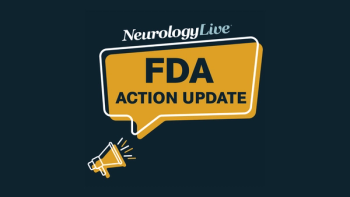
Future of gMG Treatment
James F. Howard Jr, MD, shares thoughts on the future of the treatment of gMG, highlighting the renewed interest in the disease landscape.
James F. Howard Jr, MD: The pipeline for the treatment of myasthenia gravis is rich. It’s getting richer, and it is very gratifying. I accused the CEO of one pharmaceutical company that [the] firm is interested in myasthenia now because they can spell and pronounce the word[s] myasthenia gravis. That got a laugh out of him. But it’s true. We’re seeing a lots of interest in the field with very novel therapeutics. I think we’re not done with the complement story. As I look, a plan will be forthcoming as subcutaneous injection. We have other oral inhibitors moving up the stream to C3 factor D, for instance, and still others that are looking at targeting complement production of the liver with a small interfering RNA. So there’s lots of interest in that field. The FcRn [neonatal Fc receptor] space is crowded. We have now 2 approved therapies. I’m not sure what’s going to happen there unless we can change the injection or the delivery intervals…to maintain an improvement. We’ve already shown that, for instance, with efgartigimod, some patients don’t need it for many months. That may be tough to beat, so to speak. The real question is: Is that OK, or do we need ongoing continued reduction in antibody immunoglobulin levels? This question has come up in trying to answer what activates complement. Some people believe it’s the amount of the antibody in the system. Others believe that it’s how the antibodies arrayed themselves in target[ing] the receptor complex that needs to be worked out. That may impact…how we dose an FcRn, and there may be room if we can dose once a month, once every 6 months, etc. We’ve already talked about B-cell depletion and where that’s going and the excitement in the CAR [chimeric antigen receptor] T[-cell] program. But there’s also a group of individuals who are trying to think about, “Can we reestablish immune tolerance?” There are 2 companies that are actively pursuing this right now. Trials are forthcoming. Half of my colleagues say impossible. The other half say quite possible. So we don’t have an answer yet. We’re going to have to wait for data. Wouldn’t it be nice if we could reboot the immune system of a patient [with myasthenia gravis] and not have to treat them again or treat them 20 years from now or 10 or 15 years from now? That would be something fantastic. I won’t say it’s the holy grail, but it may come close. So I think we’re going to see a continued push to personalized medicine to try to target therapeutically based on the underlying predominant pathogenic mechanism to get there. We need to understand or need to have a biomarker that will allow us to accomplish this. And we’re not there yet. And I think that’s where the thrust of our research has to go to get that answer to allows us to move forward. It’s as if our therapeutic efforts have leapfrogged all the basic science, and now we have to go back and fill in all these holes to get a better and a clearer understanding of what we’re doing, why we’re doing it, and where we can go from here.
Transcript is AI-generated and edited for clarity and readability.
Newsletter
Keep your finger on the pulse of neurology—subscribe to NeurologyLive for expert interviews, new data, and breakthrough treatment updates.
































